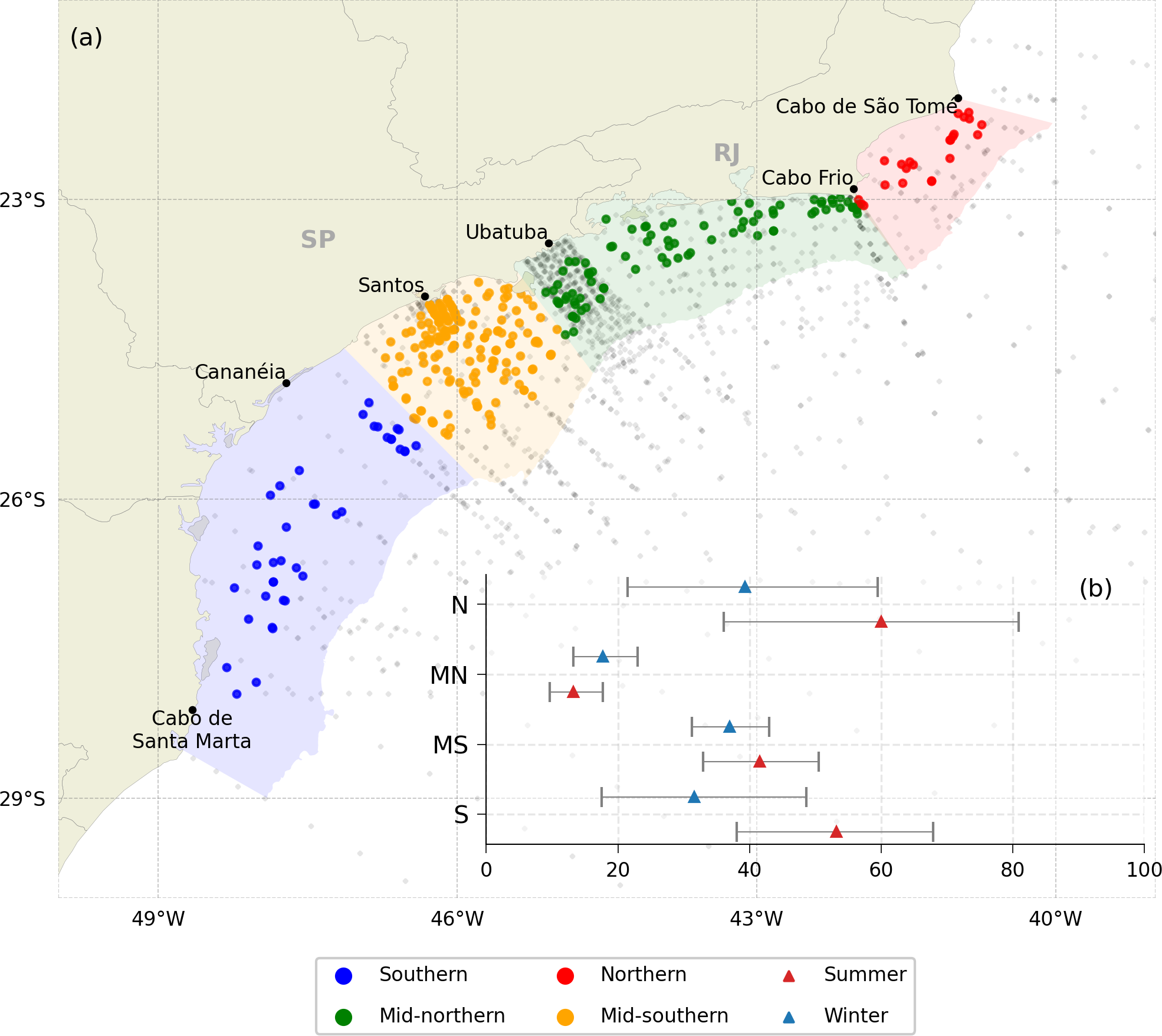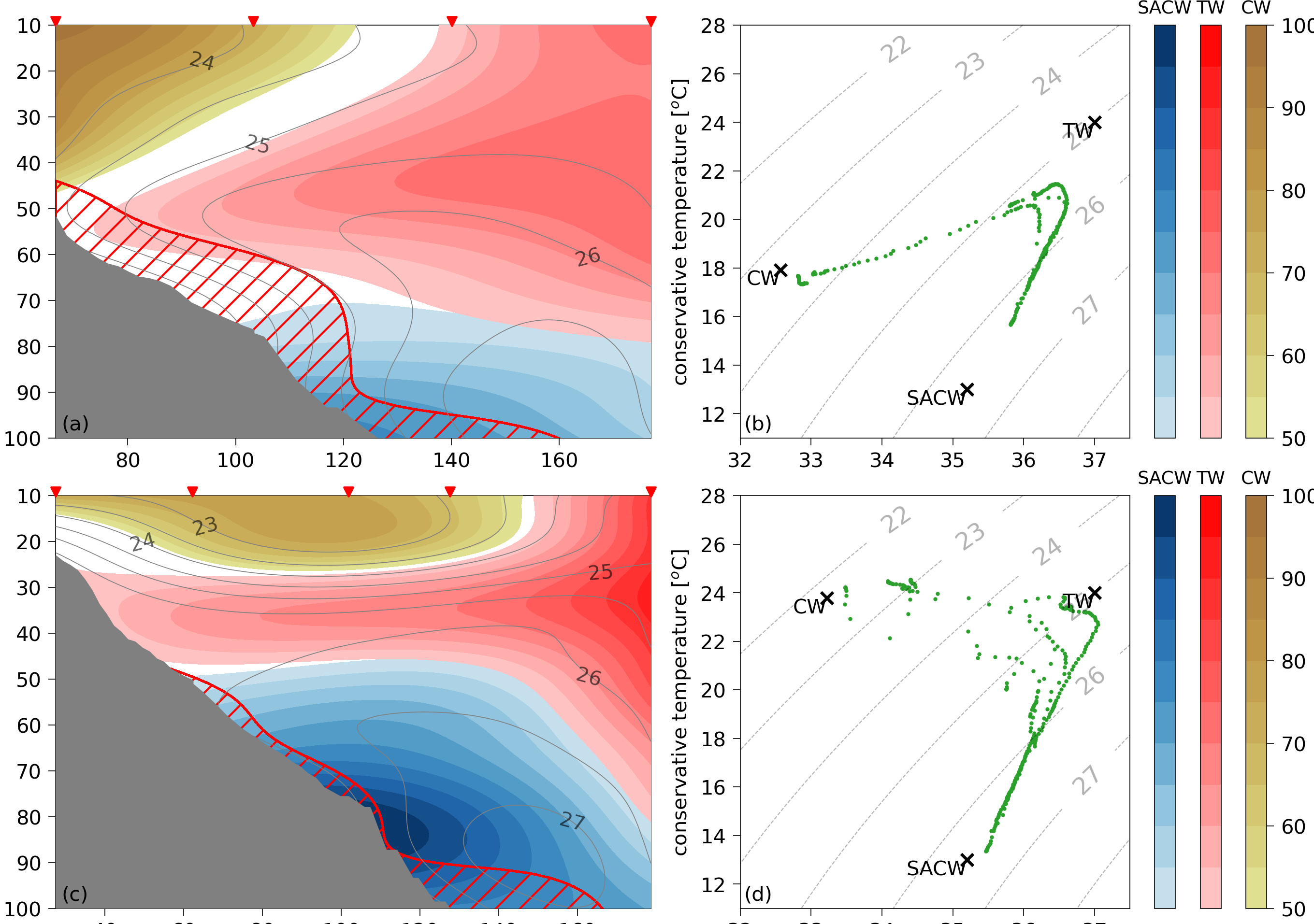Heat and salt budget variability due to cross-shelf exchanges, at the South Brazil Bight
This section presents my main research currently, which is part of my Ph.D. thesis.
A general introduction
Subsurface intrusions of salty and warm waters onto the shelf can potentially impact the thermodynamics and biogeochemistry of these relatively shallow water environments. In this work, we characterize subsurface intrusions of tropical waters (TW) at the South Brazil Bight (SBB) - a midlatitude continental shelf. Such thermohaline intrusions are usually associated with double diffusive processes and can enhance the vertical and lateral fluxes.
An inventory of salty and warm subsurface intrusions in the South Brazil Bight (SBB)
First manuscript from my Ph.D. thesis, submitted to Continental Shelf Research.
In this work, we applied a detection algorithm on a historical hydrographic dataset and, based on the outcomes of this detection, we characterized the intrusions along the SBB. We found that the intrusions tend to follow the pycnocline and are relatively common year-round, occurring at 27% of the dataset, with a maximum salinity highly correlated with the maximum stratification. Intrusions presented different characteristics along the shelf. North of São Sebastião Island (SSI), at the central portion of the SBB-, intrusions were thicker, saltier and shallower than those found south of SSI. These differences could be related to the variations in the coastal water (CW) and South Atlantic central water (SACW) volumes along the shelf and throughout the year. We found that intrusion thickness presents an inverse correlation with stratification, resulting in thinner intrusions in more stratified environments. This inverse correlation suggests double-diffusively driven intrusions. We apply the Turner angle method to investigate whether the environment is susceptible to double diffusive processes. This analysis suggests that thermohaline intrusions in the SBB might not be primarily double diffusive. However, the dominance of different double diffusion processes - diffusive convection (salt fingering) at the upper (lower) layer - suggests that these processes influence the intrusion growth, steady-state, and erosion. Nonetheless, the mechanism responsible for the initial density perturbation remains unknown, and further studies are needed to explore the relation between the Brazil Current dynamics and thermohaline warm and salty subsurface intrusions.

Fig. 1 - In (a) intrusions distribution in the study area (colored scatters) and (b) shows the summer (red) and winter (blue) occurrences, with a confidence interval of 95%.

Fig. 2 - Subsurface salty and warm intrusion as water mass percentage (a, c) and respective T-S diagrams (b, d) in the South Brazil Bight (SBB). In (a) and (c), the colors represent the water masses: red is the tropical water (TW), blue is the South Atlantic Central Water (SACW) and yellow is the coastal water (CW).
Next chapters ...
Our next step is to use numerical experiments to explore the dynamics of these intrusions, by investigating their trigger processes, how intrusions dissipate into the shelf and what is their impact on the heat/salt budget of the shelf. We will use the Regional Ocean Modeling System (ROMS) in the SBB domain (Figure 3), forced at the boundaries by global outputs from GLORYS12V1 and at the surface by global reanalysis from ERA5. We expect to replicate the conditions during two cruises that observed subsurface intrusions in two distinct areas and from that investigate the processes that influence the formation of this features.